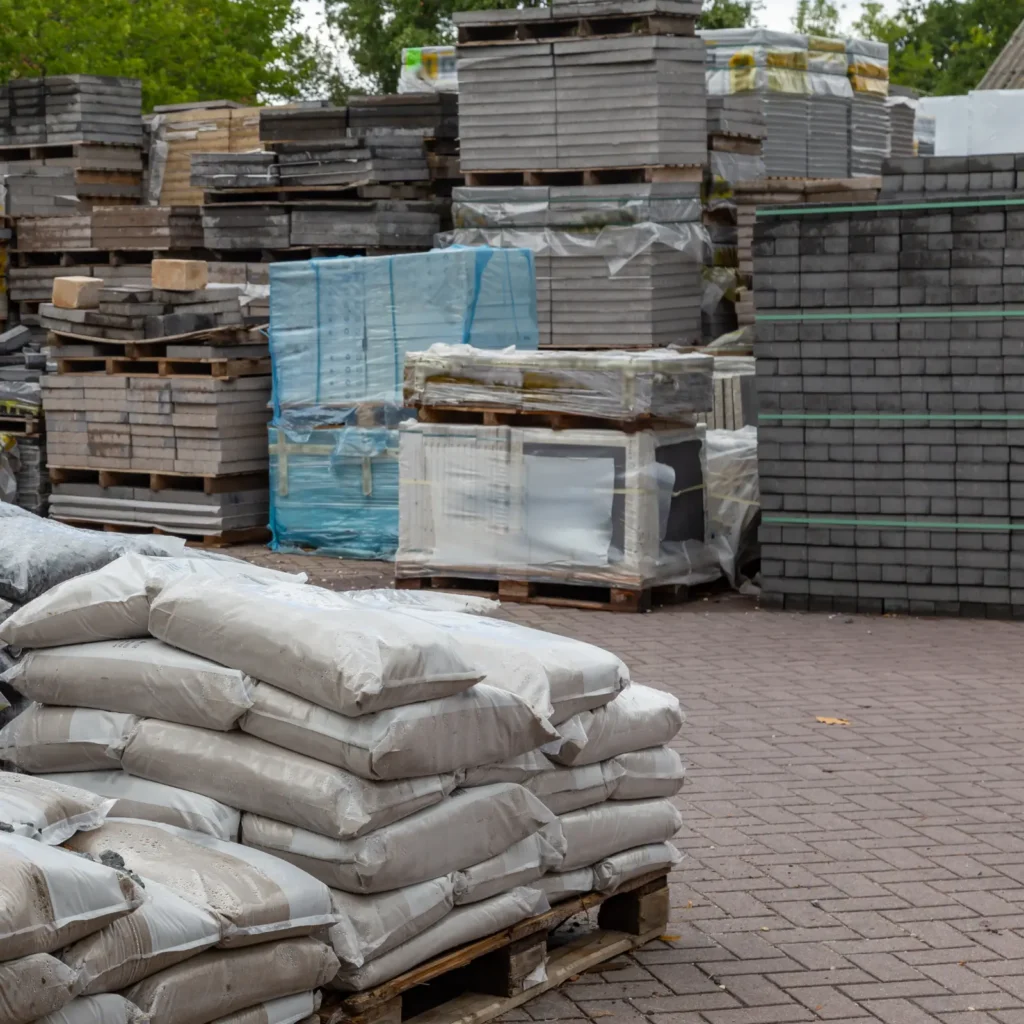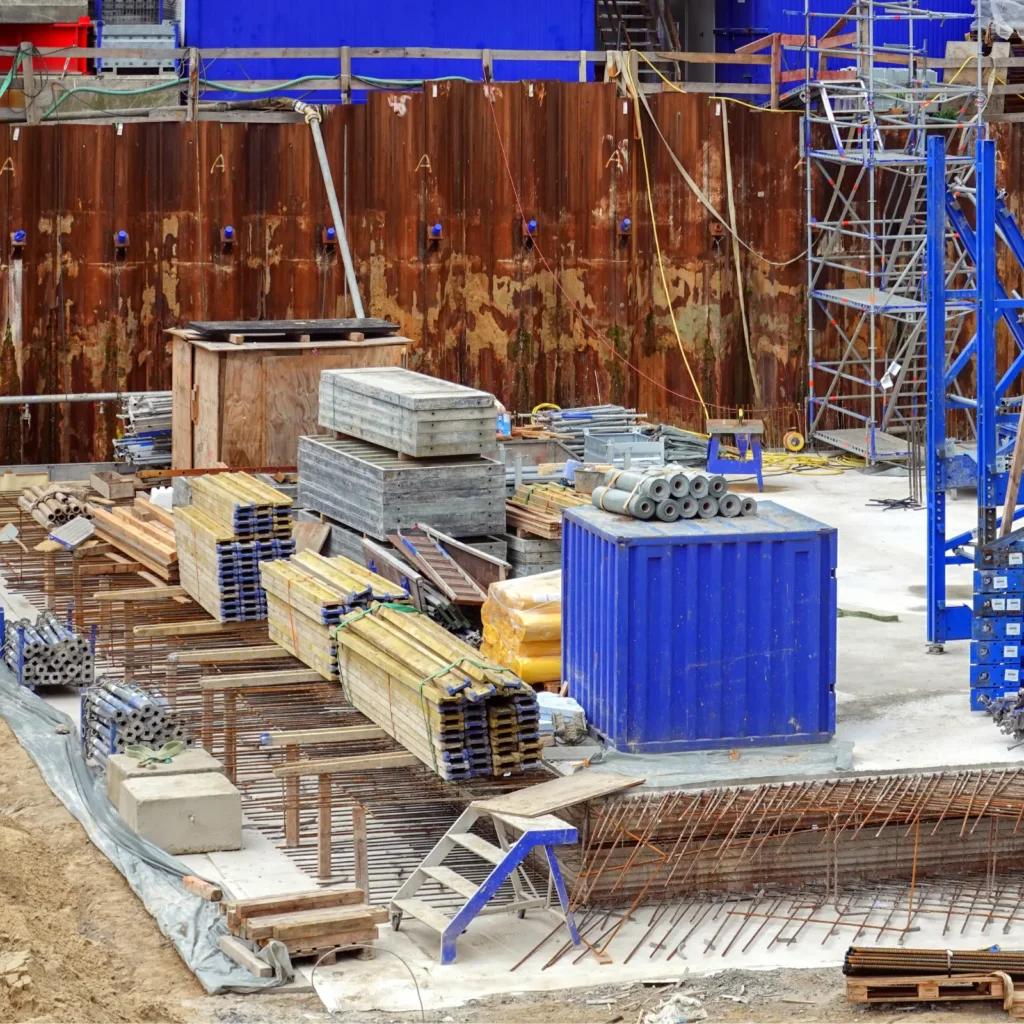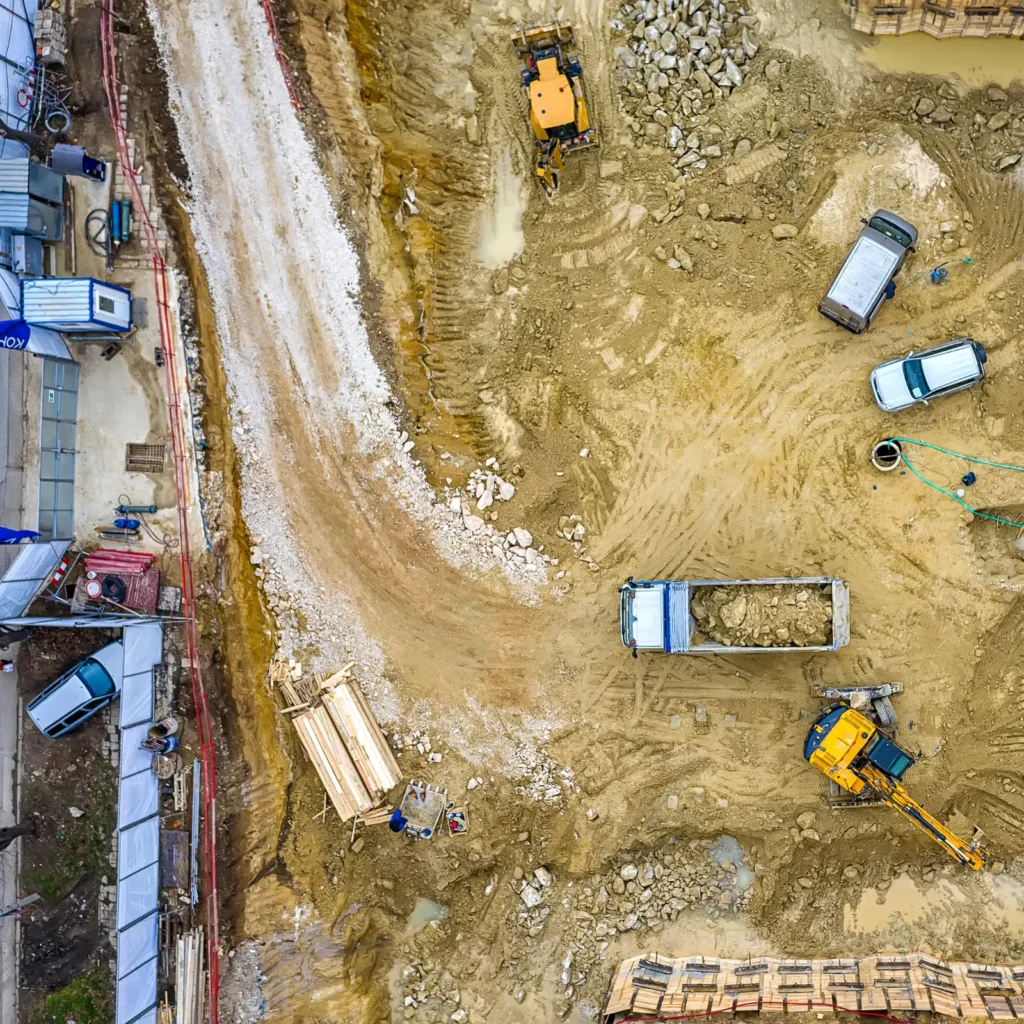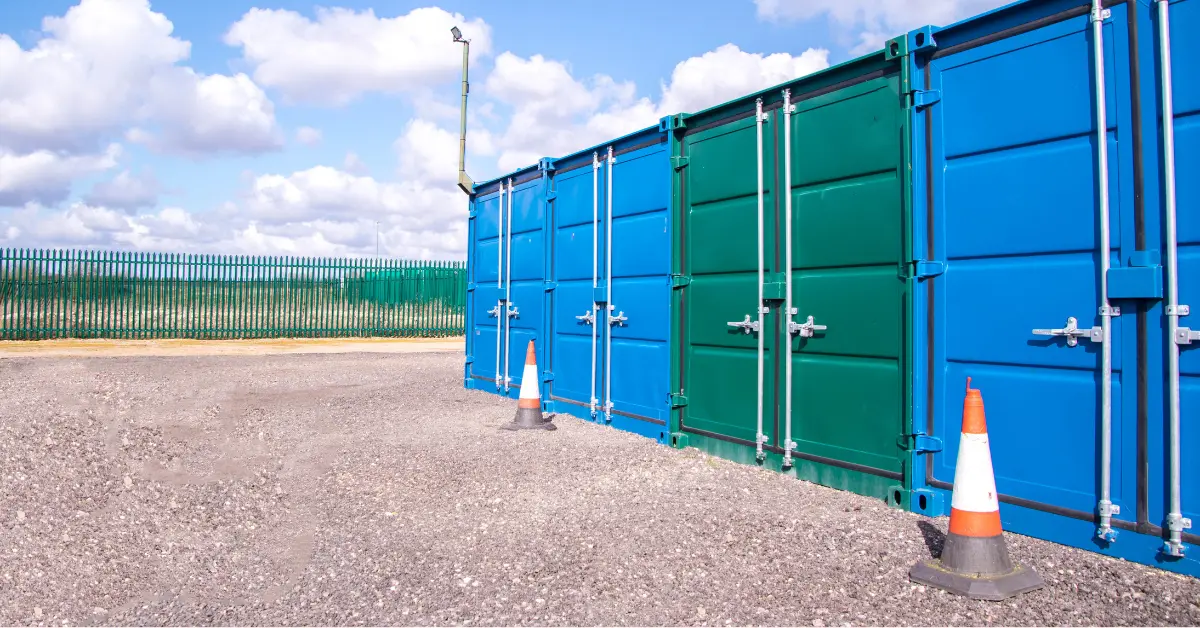In the bustling world of construction, managing a site efficiently presents various challenges, with construction site storage standing out as a pivotal concern. Every project demands a tailored approach to storing tools, materials, and equipment safely and securely. The dynamic nature of construction work, coupled with limited space and the necessity to protect valuable assets from theft and environmental damage, complicates storage management. This complexity emphasizes the need for robust and flexible storage solutions that can adapt to the unique demands of each construction project.

Understanding Construction Site Storage Options
Types of Containers
The variety of containers available for construction site storage is vast, catering to the diverse needs of projects of all sizes and types. These containers range from large steel units, ideal for storing machinery and bulk materials, to smaller, more specialized containers designed for specific items like paints and chemicals. Among the construction site storage container types, some common options include shipping containers, which are durable and secure, and office containers, which provide workspace and storage.
Portable vs. Waterproof Containers
Deciding between portable construction site storage containers and waterproof construction site storage containers rests on the specific requirements of your construction project. Portable containers offer the flexibility of easy relocation, making them ideal for sites that evolve rapidly or for use across multiple locations. On the other hand, waterproof containers are essential in protecting sensitive materials from water damage, especially in areas prone to adverse weather conditions.
Benefits of Renting Storage Containers
Opting to rent storage container units for construction projects presents several advantages. Rental agreements offer flexibility, allowing project managers to scale their storage solutions up or down based on the current phase of the project. This flexibility can lead to significant cost savings, especially in projects with fluctuating storage needs. Additionally, renting eliminates the long-term commitment and maintenance responsibilities associated with owning storage containers, freeing up resources and focus for the core activities of the construction project.
Maximizing Space with Effective Storage Solutions
Strategic Placement of Containers
To effectively manage a construction site, it’s essential to strategize the placement of containers for optimal space utilization. This approach not only ensures a tidy and organized site but also significantly enhances operational efficiency and safety. Here’s a deeper dive into each strategy:
- Assess Site Layout: Start the optimization process by thoroughly evaluating the construction site’s layout. This involves identifying potential storage areas that won’t interfere with daily operations, access routes, or safety procedures. By mapping out the site, planners can visualize the best locations for containers, ensuring they support, rather than hinder, the workflow. This step is crucial for establishing a foundational understanding of the site’s spatial dynamics, informing all subsequent decisions about container placement.
- Zoning for Efficiency: Implement a zoning strategy by grouping storage containers according to the nature and frequency of use of their contents. Containers holding items needed daily should be placed closer to active work areas. This reduces the time and effort required for workers to access essential tools and materials, thereby boosting productivity and minimizing unnecessary movement around the site. Zoning aligns with lean management principles, focusing on waste reduction and efficiency.
- Leverage Perimeter Areas: For less frequently needed items, consider utilizing the site’s perimeter for storage. This strategy keeps the central and more valuable site area free for core operational activities, such as construction work, meetings, and material processing. Placing less critical storage on the outskirts maximizes space utilization without compromising the site’s functionality or accessibility for heavy machinery and personnel.
- Consider Traffic Flow: Carefully position containers to complement the natural movement patterns of people and machinery on site. This involves analyzing and predicting traffic flows to place containers in locations that facilitate smooth transitions between different areas of the site. Such strategic placement helps to prevent congestion, reduces the risk of accidents, and promotes a safer working environment for everyone involved.
- Height Restrictions: When arranging containers, especially if stacking them, it’s vital to be aware of any height restrictions. This consideration is important not only for maintaining clear sightlines across the site but also for complying with safety regulations that prevent toppling risks and ensure emergency access is not obstructed.
By applying these strategies, construction project managers can significantly improve the efficiency and safety of their sites. Effective container placement is a nuanced balance between maximizing space utilization and maintaining an organized, functional work environment
Innovative Organization Techniques
Implementing drawer organizers within storage containers for small tools and accessories is a highly effective strategy for maintaining an organized and efficient workspace. This method prevents these smaller items from being overshadowed or lost amidst larger tools, ensuring that every piece of equipment is easily accessible when needed. By compartmentalizing the storage space, drawer organizers allow for a more systematic arrangement of tools, which not only maximizes the available space but also significantly reduces the time spent searching for specific items.
Furthermore, incorporating a color-coded labeling system enhances this organizational method by providing a visual guide to the contents of each compartment. By assigning different colors to various categories of tools or accessories, individuals can quickly identify the location of the item they need without having to open and search through multiple drawers or containers.
Utilizing Vertical Space
The vertical dimension offers untapped potential for maximizing storage space on construction sites. Stacking construction site storage containers, when structurally feasible and safe, effectively doubles or triples the storage capacity within the same footprint. Inside containers, installing shelving units takes advantage of the vertical space, enabling the organized storage of tools, materials, and equipment. This approach not only increases storage density but also improves item visibility and accessibility.
The Role of Modular Storage Units
Modular storage units introduce unparalleled flexibility and efficiency to construction site storage. Their customizable nature allows for the creation of tailored storage solutions that can evolve with the project’s needs. By interlocking or stacking modular units, construction sites can adapt their storage capacity and layout without significant disruptions. This adaptability is particularly beneficial in dynamic construction environments where space and storage requirements can change rapidly.

Enhancing Security on Construction Sites
Theft Prevention Techniques
Securing a construction site from theft and unauthorized access requires a multifaceted approach, tailored to the unique vulnerabilities of these areas. Effective theft prevention in construction areas involves key techniques:
- Implement Access Control: One of the first steps in securing a construction area is to establish controlled entry points. By restricting site access to authorized personnel through the use of key cards, biometrics, or security codes, you can significantly reduce the risk of unauthorized entry. This method not only helps in keeping potential thieves at bay but also in tracking who enters and exits the site, adding an extra layer of security and accountability.
- Secure Storage Containers: The use of heavy-duty locks and tamper-proof seals on storage containers is a straightforward yet effective way to secure valuable tools and materials. These physical security measures make it significantly harder for thieves to gain access without being detected. Ensuring that containers are robust and well-secured is a simple step that can prevent a large proportion of opportunistic thefts.
- Inventory Management: Maintaining a detailed inventory of all tools, materials, and equipment on the construction site is essential for theft prevention. Regular audits and checks can quickly identify if something is missing, allowing for prompt action to recover stolen items or adjust security measures. An effective inventory management system also helps in managing resources more efficiently, reducing the risk of loss due to mismanagement or oversight.
By taking proactive steps to control access, monitor the premises, illuminate dark areas, secure storage, and manage inventory, construction managers can protect their assets from theft and vandalism. This comprehensive approach not only safeguards the financial and material investments in the project but also helps in maintaining the schedule and ensuring the safety of the workforce.
Surveillance and Lighting
The strategic use of surveillance cameras and lighting serves as a powerful deterrent against theft and unauthorized site access. Their installation should be meticulously planned to ensure comprehensive coverage of the construction site, with a particular emphasis on vulnerable areas such as storage spaces, entry and exit points, and secluded zones that may be attractive targets for thieves or vandals. High-definition cameras that can capture clear footage even in low-light conditions are essential, as they provide the detail needed for identification purposes and can be invaluable in the event of a security breach. Additionally, the mere presence of cameras acts as a powerful deterrent, signaling to potential intruders that their actions are being monitored and recorded.
Complementing the surveillance cameras, motion-activated lighting significantly enhances site security, especially after hours. These lighting systems are designed to illuminate areas when movement is detected. The sudden illumination not only startles and disorients unauthorized individuals but also alerts security personnel to potential breaches. This reactive lighting strategy is highly effective in deterring trespassers.
Job Site Tool Storage: Organization and Accessibility
Accessible Storage Solutions
Designing storage solutions with ease of retrieval in mind ensures that workers can access tools without delays. This involves thoughtful placement of frequently used items in easily reachable locations, avoiding overcrowding, and ensuring that every tool has a designated spot. Such considerations prevent time wastage and contribute to a smoother execution of construction tasks.
Maintaining an Inventory of Tools
Regularly updated records of tools, including their condition and location, provide a clear overview of the site’s assets. This transparency not only aids in theft prevention but also facilitates the replenishment of supplies and the timely maintenance of equipment. A well-maintained inventory ensures that tools are always available when needed, supporting uninterrupted construction activities.
Regular Maintenance and Storage Upkeep
Tools are susceptible to various forms of wear and degradation, with rust and corrosion being among the most common issues that arise from poor storage conditions. Thus, it is imperative to ensure that storage areas are kept clean, dry, and well-ventilated. A dry environment prevents moisture accumulation, which is a primary cause of rust, while good ventilation mitigates the buildup of damp air that could further exacerbate tool deterioration.
Periodic checks and maintenance of tools are equally important. For example, sharpening blades, oiling moving parts, and replacing worn components not only keep the tools in optimal working condition but also prevent accidents and ensure the safety of the users. Furthermore, such diligent care and maintenance routines help in identifying potential issues before they escalate into major problems, thus saving on costly replacements and downtime.
Construction Site Storage Safety Tips
Hazardous Materials
The storage of hazardous materials on construction sites demands stringent safety measures to protect both workers and the environment. These materials should be stored in specialized containers that are clearly labeled and equipped with the necessary safety features to prevent leaks and spills. Implementing strict protocols for handling and storage minimizes the risk of accidents and ensures compliance with health and safety regulations.
Safety Protocols
This includes providing proper training for workers on the correct procedures for retrieving and handling materials, especially those that are heavy or hazardous. Employing ergonomic principles in the design of storage areas can also reduce the risk of injuries related to lifting and moving. Regular safety briefings and clear signage reinforce these protocols, ensuring that all site personnel are aware of and adhere to best practices for storage safety.
Assessing and Choosing the Right Storage Solution
Cost-Benefit Analysis of Renting vs. Purchasing
Deciding whether to rent or purchase storage units involves a careful cost-benefit analysis. Renting offers flexibility and can be cost-effective for short-term projects or when the storage needs are expected to change. It also eliminates the need for long-term maintenance and storage of the containers post-project. Purchasing, however, may offer long-term savings for ongoing or multiple projects, with the added benefit of asset ownership. Weighing the immediate and long-term financial impacts against the project requirements will guide this decision.
Customizing Storage Solutions
For many construction projects, off-the-shelf storage solutions may not fully meet the specific needs. Customizing storage options allows for adjustments in size, security features, and functionality to precisely accommodate the project’s demands. This might include adding shelving, climate control systems, or specialized security systems to standard containers. While customization can increase costs, the benefits of having a storage solution perfectly tailored to the project’s requirements can significantly outweigh these expenses by improving efficiency on the construction site.

As construction projects continue to evolve in complexity and scale, the importance of adopting and implementing best practices in storage cannot be overstated. By prioritizing the dual goals of maximizing space and enhancing security, construction professionals can significantly improve operational efficiency and project outcomes. Moving forward, it is essential to stay informed about the latest developments in storage solutions and continuously seek innovative approaches to meet the changing demands of the construction industry. Implementing these best practices is not just about addressing the immediate storage needs but also about contributing to the overall success and sustainability of construction projects in the long term.

 Receive a Quick Quote
Receive a Quick Quote